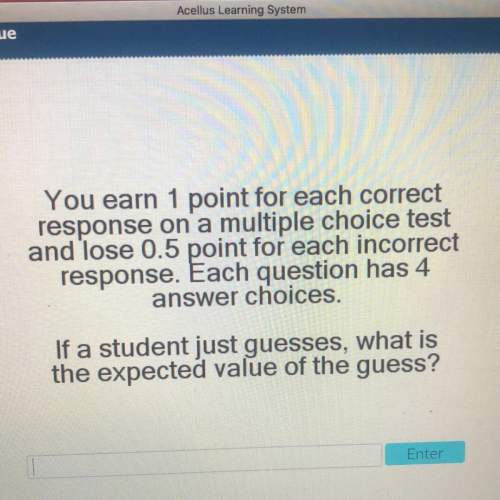The function p(x) is mapped to i(x) by a dilation in the following graph.
parabola p of x pass...

Mathematics, 15.07.2019 22:20 stheresa777
The function p(x) is mapped to i(x) by a dilation in the following graph.
parabola p of x passes through (negative 1.5, 0), (2, negative 3) & (5.5, 0). parabola i of x passes through (negative 1.5, 0), (2, negative 6) & (5.5, 0).
which answer gives the correct transformation of p(x) to get to i(x)?
i(x)=2p(x)
i(x)=1/2p(x)
i(x)=p(1/2x)
i(x)=p(2x)

Answers: 2


Another question on Mathematics

Mathematics, 21.06.2019 17:30
The following frequency table relates the weekly sales of bicycles at a given store over a 42-week period.value01234567frequency367108521(a) in how many weeks were at least 2 bikes sold? (b) in how many weeks were at least 5 bikes sold? (c) in how many weeks were an even number of bikes sold?
Answers: 2



Mathematics, 21.06.2019 23:00
Rob filled 5 fewer plastic boxes with football cards than basketball cards. he filled 11 boxes with basketball cards.
Answers: 1
You know the right answer?
Questions


English, 23.08.2019 23:30


Mathematics, 23.08.2019 23:30

English, 23.08.2019 23:30



History, 23.08.2019 23:30





Physics, 23.08.2019 23:30


Mathematics, 23.08.2019 23:30



History, 23.08.2019 23:30


Mathematics, 23.08.2019 23:30




